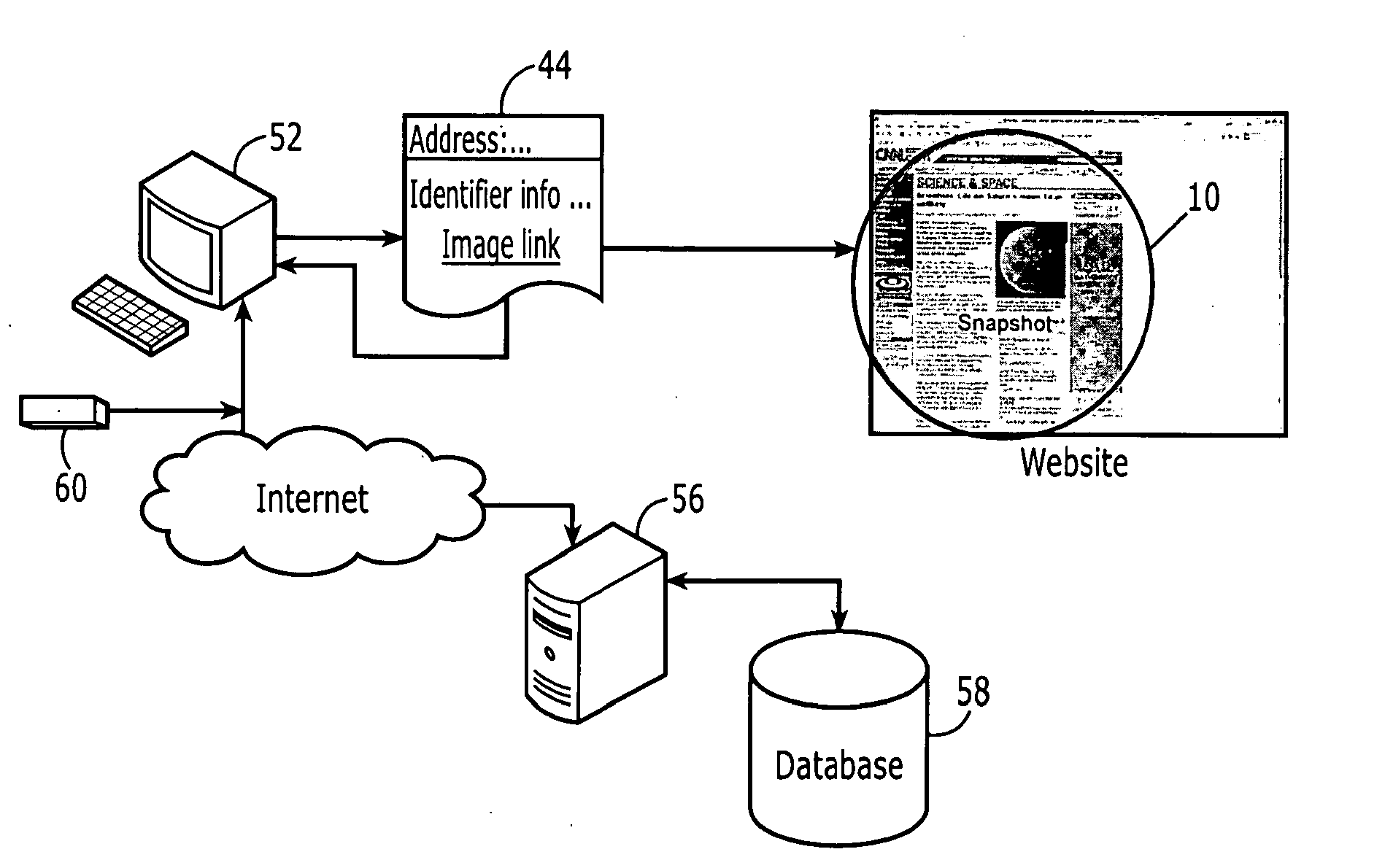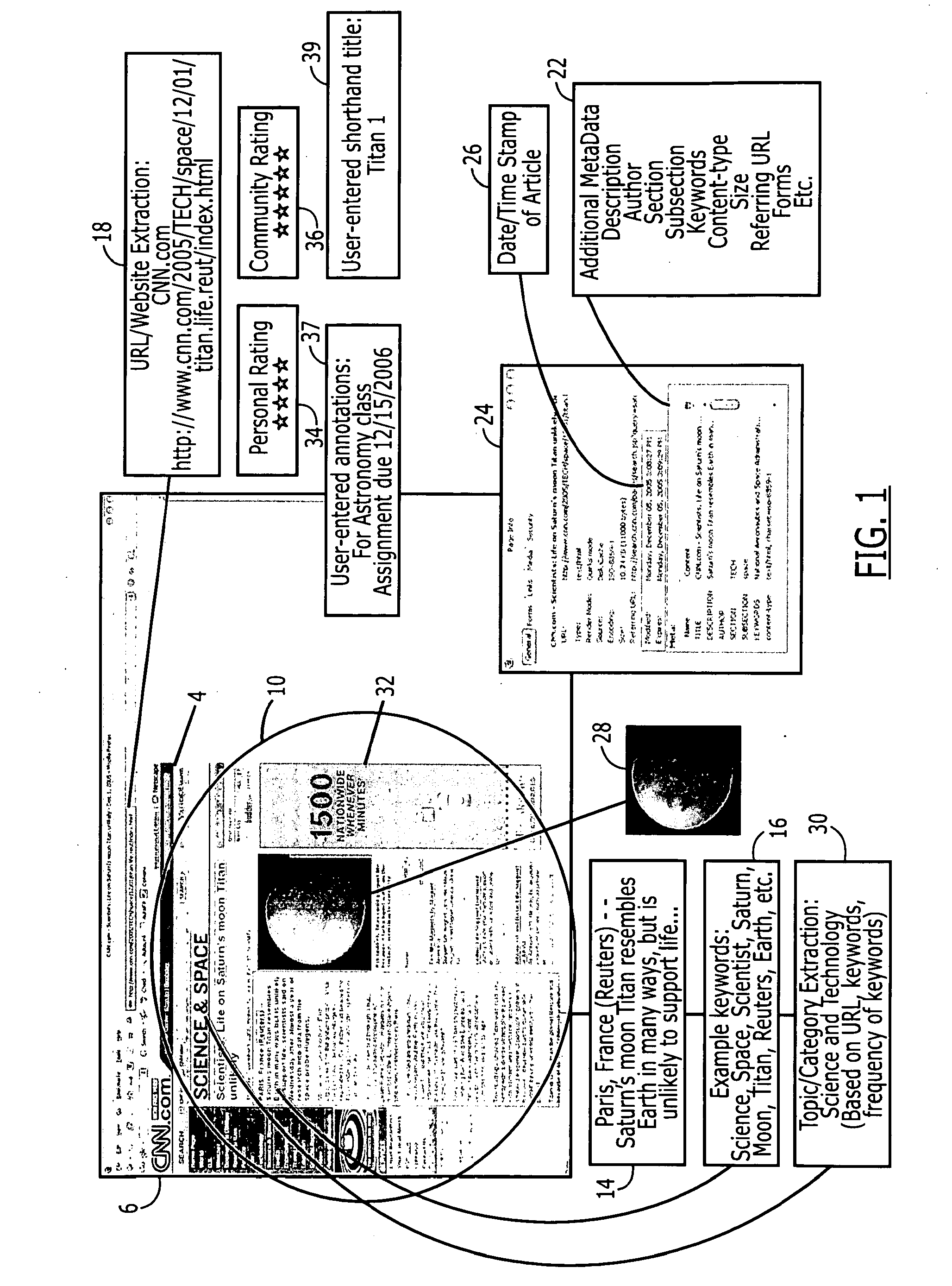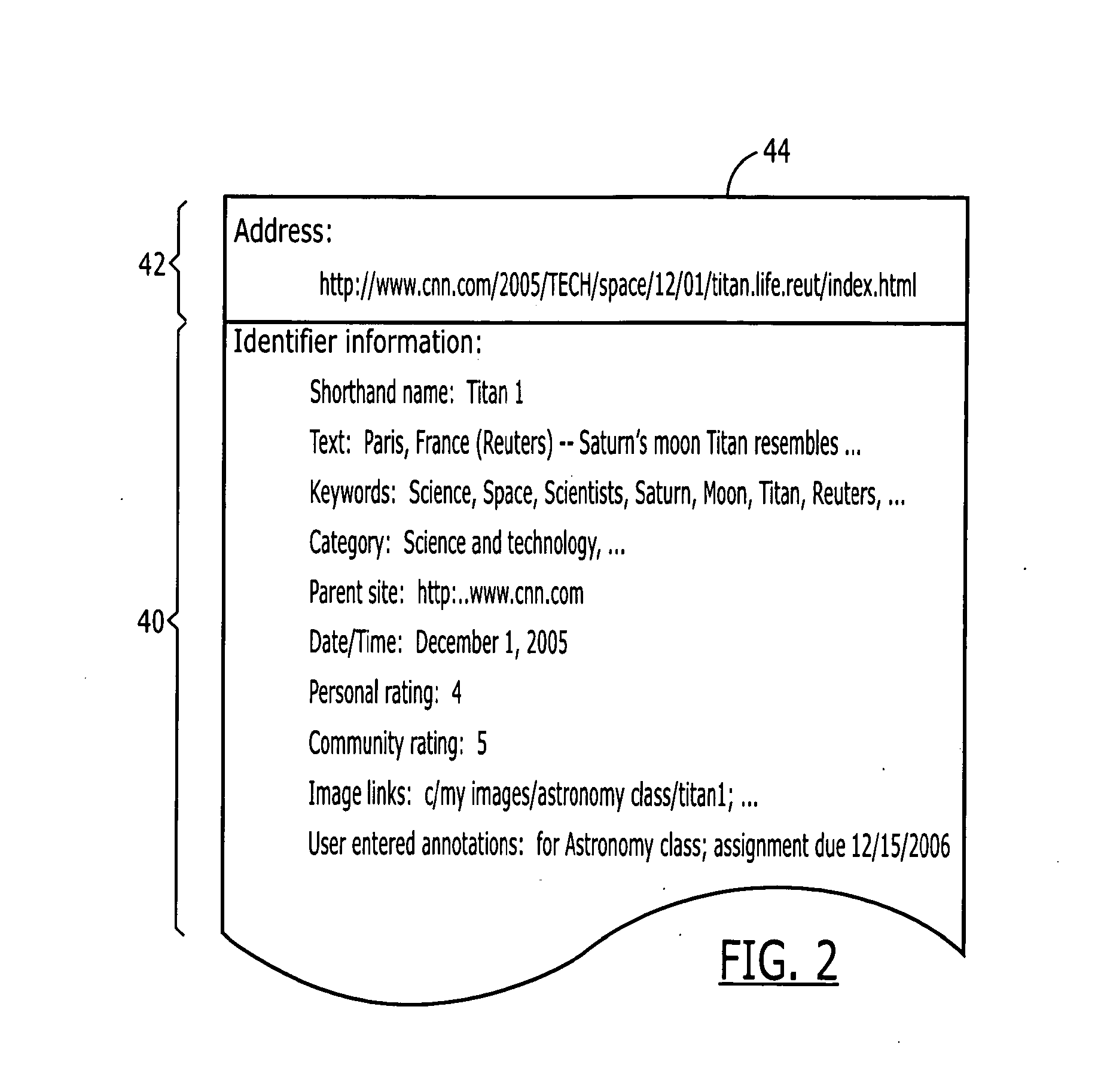Since information on
the internet can be constantly updated or changed, information may not always be permanently or persistently available and may be difficult to capture or store.
However, the screenshot may be limited to the user's
display size (which is usually smaller than most articles).
Screenshots do not necessarily store any searchable text and therefore are not easily searchable.
Capturing information through a screenshot does not necessarily allow a user to copy / paste text from it either.
Also, the saving of screenshots is not effectively integrated in the browser and thus require the user to manually manage creating an image file from the screenshot, naming it, and saving it under categorized folders for further retrieval.
Further, information, saved in a screenshot may be effectively updated or changed, and the screenshot is not able to verify such updates and changes.
These steps make it very cumbersome to user screenshots to capture information online, thus limiting the usefulness and effectiveness of screenshots as a tool to capture, preserve, share, and manage internet-based information and content.
However, this method may destroy the formatting on the original webpage.
Many
cut and paste entries also copy unnecessary tables and script which makes it very difficult to have the information easily readable and useful.
Although this method is fairly easy, it also takes up hard-drive resources by saving every single picture of the webpage (often including unwanted advertisements and content, menus, etc) and retaining the original links by mapping them to directories on the computer.
This method is resource intensive and results in the collection of vast amounts of information that may be unnecessary.
Also, this “Save” functionality may not be very accurate in pages with scripts because some references in these scripts that rely on
server-side
processing cannot be accessed by the
client side browser for later execution, resulting in missing information when saved.
Since the “Save” functionality tries to retain the structure of the website, any changes the user would do to sort and organize these downloaded files / folders may potentially break the link structures of saved pages potentially “losing” important information.
These factors can make the “Save” functionality a last resort due to the difficulty of organization, the inaccuracy in capturing information, and the demand in hard-drive space.
However, not having a
digital copy has a lot of drawbacks in terms of being able to easily and effectively utilize the information in subsequent research and other material compilation.
There are other drawbacks to printing as well.
It is not always feasible to print material off the web.
Printing files, that are hundreds of pages long, wastes ink and paper.
Lot of portal sites and complex web pages are not very printer-friendly as well and may not be formatted to allow easy printing.
Also, keeping a hard-copy of information captured online can be difficult in terms of filing and accessing for the future.
Bookmarks are a common but ineffective way to capture information online.
When a bookmarked
web page gets taken off-line or gets updated, the user may lose information which was meant to be captured, since revisiting the URL may return an updated page or a non-existing page error.
Furthermore, web-sites often undergo maintenance and restructuring rendering bookmarks possibly no longer relevant or useful.
Bookmarked pages are also not easily searchable, and users have to manually access each bookmarked page to search them.
Another problematic aspect about bookmarks is that when categorized, bookmarks use folders based on a very basic
user interface (In the
user interface, users are limited to the file and folder aspects of the underlying
operating system with limited drag-and-drop functionality).
Unfortunately, bookmarks are also not easily portable.
There are websites that allow you to store URLs online, but this only lets a user use the URLs without providing a common interface of bookmark features.
Without knowing, users try to capture such pages through bookmarks only to revisit those bookmarks and receive errors or the parent pages loosing valuable information.
All these reasons and more make bookmarks an ineffective way to capture and utilize information available on
the internet.
 Login to View More
Login to View More  Login to View More
Login to View More 


